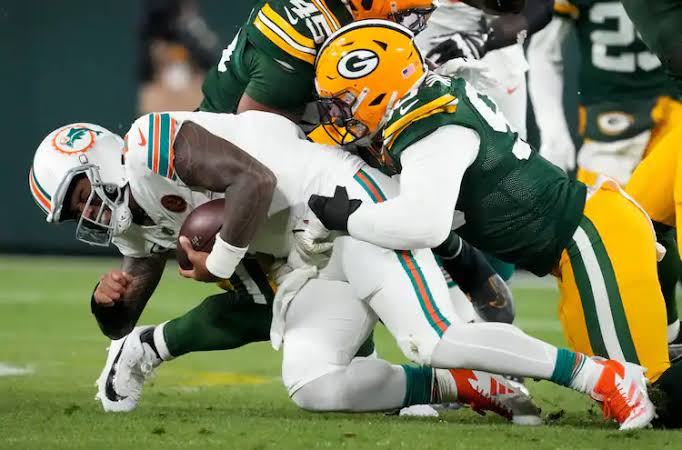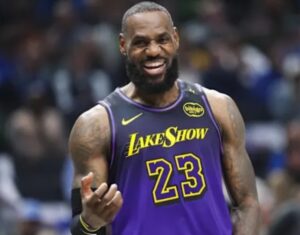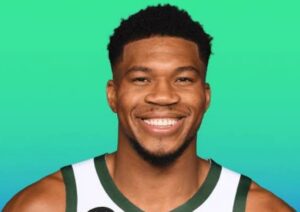
Tua Tagovailoa’s Dolphins aren’t built to win when it matters most

The Miami Dolphins shunned conventional wisdom by constructing an offense that prized supposed scheme superiority and championed star power at dependent positions over the time-honored tactic of constructing a roster from the inside out, beginning with the linemen.
Through nearly three full seasons of the Mike McDaniel regime, it’s fair to say that gamble is failing. Perhaps miserably.
The Dolphins gave their coach a big raise and a contract extension before this season, made Tua Tagovailoa a $53 million-per-year quarterback and handed massive contracts to both starting wide receivers — Tyreek Hill and Jaylen Waddle — that average out to around $30 million per year each. All they have to show for it is another middling record and no wins of note.
Thursday night’s humbling 30-17 loss at Green Bay was just the latest example of their warts becoming obvious when it matters most. Even with Tagovailoa now weeks removed from his latest concussion-related absence, this remains a track team that runs nothing but 10-meter sprints — often to nowhere.
The Dolphins’ offense lacks any semblance of downfield intent, Tagovailoa was sacked five more times on Thanksgiving behind a horrible offensive line, McDaniel’s hyped outside zone rushing scheme is no longer a problem for defenses, and at 5-7 this season has already slipped away. The scope of the Dolphins’ offense continues to shrink, and rival executives and coaches figure the franchise’s woes go beyond just trying to fix a broken line.
“I don’t think [McDaniel] has the answers to get them out of this, honestly,” said one general manager who has watched the Dolphins several times this season, including Thursday night, and spoke on the condition of anonymity because GMs can’t comment publicly on the performance of other teams. “It looks like a really basic offense — everything is a slant or in-cutter, and it’s all short and intermediate stuff.
When you pay a quarterback that much money and you pay two wide receivers that much money, aren’t you doing that for them to actually make big plays?
“Isn’t that why you do it in the first place? I just don’t know if that quarterback really wants to push the ball down the field. The offensive line is a part of it. But do you really pay those guys all that money so they can run five-yard slants?”
Another general manager, whose team has faced the Dolphins this season, said: “They have a lot of speed, but I just don’t think they’re built to win this time of year or succeed in cold weather. Their line is pretty s—ty, but that’s not where they wanted to spend besides the left tackle [33-year-old Terron Armstead], and he looks like he’s done to me. Controlling the line of scrimmage still matters, no matter how much speed you have.”
Before we assess the short-to-intermediate funnel that is the Dolphins’ passing game, to say nothing of their shriveling running attack, let’s address the elephants — er, water-bound mammals? — in the room. The Dolphins, with three cold-weather outdoor teams in their division, have lost 10 of 12 games since 2019 when the temperature at kickoff was below 50 degrees, according to the website TruMedia.
They have an abysmal minus-137 point differential in those games. And their franchise quarterbackis 9-17 in his career (including the playoffs) against teams that finished with a winning record, with five straight losses and one win in the past 12 such games — and that over the similarly untrustworthy Dallas Cowboys last year. Tagovailoa has thrown 22 interceptions in those 26 games, averaging just 227 yards and completing less than 64 percent of his passes for a lowly 87.8 rating.
In years past, he could rely on Hill bringing down some 50-yard bombs or Waddle turning a bubble screen into a 70-yard score and McDaniel’s outside zone scheme providing run after momentum-changing run. But that’s long gone now. The Dolphins are 27th in yards per carry this season (4.0) after pacing the NFL at 5.1 yards per rush a year ago. They are tied for 24th in the NFL with just eight rushing touchdowns after tying for the NFL lead with 27 in 2023.
“Their line is undermining their offense,” the second GM said.
At the same time, Hill is running just 19.5 percent go routes this season compared with 24.4 percent a year ago, according to TruMedia, and a Miami team that used splash play after splash play to run up 70 points against the Broncos in September 2023 now sometimes appears to have two high-priced decoys. The Dolphins have 26 completions of 20 yards or more, tied for 29th in the league; they were eighth with 59 a year ago and third with 62 in McDaniel’s first season. The ongoing constriction of their offense should be concerning to everyone in ownership and management.
NFL teams are averaging 7.7 air yards per pass attempt; Tagovailoa does not have a single game in which he averaged more than 7.2. He ranks 34th — last among qualified passers — with a staggering 5.8 air yards per pass. Tagovailoa has attempted a pass of at least 20 air yards just 7.2 percent of the time (also last among qualified passers), while a whopping 25.6 percent of all his passes are at or behind the line of scrimmage, the highest rate in the NFL. He ranks 25th in yards per completion, and he has completed just 9 of 20 passes of 20 yards or more, with a rating of 85.4 on those attempts.
Perhaps rebuilding the line will help reverse Miami’s offensive malaise, but I doubt it’s an easy fix. This team will not reach the postseason, let alone make anything happen in the playoffs. Recent drafts haven’t been as impactful as necessary. And with the wide receivers and quarterback making the kind of money they are and the defense in need of reinforcements as well, there’s only so much the Dolphins can do to help the line in free agency.
It’s also worth keeping an eye on the coaching family tree that produced McDaniel. His mentor, San Francisco Coach Kyle Shanahan, is watching his offense get stifled and riddled weekly, although injuries and a suspect line are also issues there. And another Shanahan protégé, Houston offensive coordinator Bobby Slowik, is slumping, too. (The Texans have one of the worst lines in the league and have suffered key injuries as well.)
They all probably will be after the same type of offensive linemen this offseason, making for stiff competition. And it could be that their collective stagnation is part of a larger trend beyond their individual personnel woes.
“I kind of see what you see,” the first general manager said. “Everything in this league is cyclical, and the league always adjusts. I’m not saying they’ve been figured out or anything like that, but we’ve seen stuff like the wildcat and wide receiver screens and different wrinkles and schemes come and go. A lot of people have focused a lot of time on trying to stop the Shanahan system for a while now. Nothing lasts forever in this league.”



